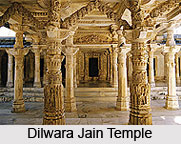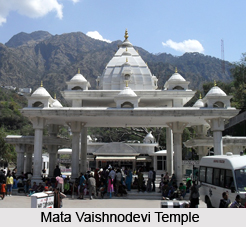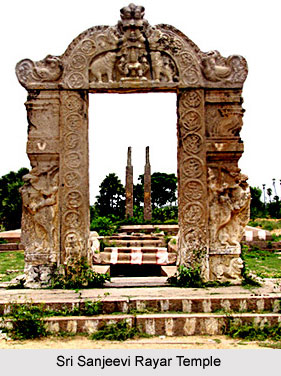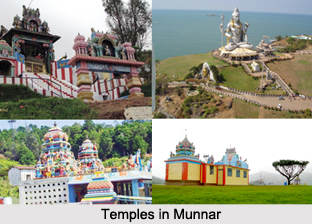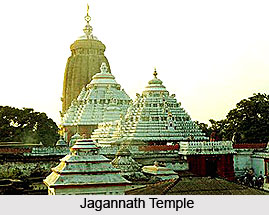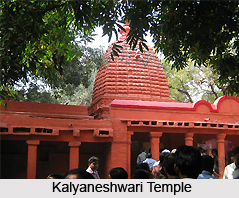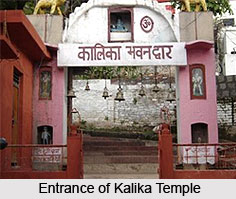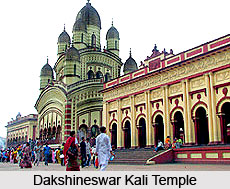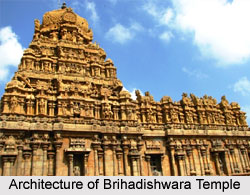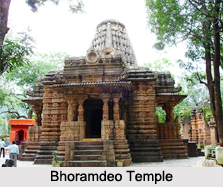 Bhoramdeo is a temple complex which is located in the Indian state of Chhattisgarh. More specifically, this complex is situated 18 km to the North-West of the tehsil town of Kawardha, in the Kabirdham district of Chattisgarh. Globally, Bhoramdeo Temple can be pinpointed at coordinates 22 degrees 6 minutes 57.6 seconds North and 81 degrees 8 minutes 52.8 seconds East. This temple complex is named as Bhoramdeo because the Gond Tribes of the area worshiped Lord Shiva in the name of Bhoramdeo. Bhoramdeo is an old temple complex of the Hindus. People come to Bhoramdeo temple complex to worship its ruling deity, Lord Shiva. This temple complex is also famous as "Khajuraho of Chhattisgarh" and the "Scintillating Poetry in Stone". This temple is considered to be especially valuable to the archaeologists and historians.
Bhoramdeo is a temple complex which is located in the Indian state of Chhattisgarh. More specifically, this complex is situated 18 km to the North-West of the tehsil town of Kawardha, in the Kabirdham district of Chattisgarh. Globally, Bhoramdeo Temple can be pinpointed at coordinates 22 degrees 6 minutes 57.6 seconds North and 81 degrees 8 minutes 52.8 seconds East. This temple complex is named as Bhoramdeo because the Gond Tribes of the area worshiped Lord Shiva in the name of Bhoramdeo. Bhoramdeo is an old temple complex of the Hindus. People come to Bhoramdeo temple complex to worship its ruling deity, Lord Shiva. This temple complex is also famous as "Khajuraho of Chhattisgarh" and the "Scintillating Poetry in Stone". This temple is considered to be especially valuable to the archaeologists and historians.
History of Bhoramdeo Temple Complex
Bhoramdeo Temple Complex is known to be erected between the 7th and 12th centuries A.D. This complex was constructed at the foot of the thickly forested range of hills called Maikal. These hills were located in the Daksina or Southern Kosala region which was once ruled by Nagwanshi Kings. This region is today recognized as the Indian state of Chhattisgarh. King Ramchandra of the Nag Dynasty is credited with the establishment of Bhoramdeo Temple Complex. The Nagwanshi was a snake-worshipping tribe in ancient India and are also known to be the practitioners of tantrism.
Bhoramdeo Temple Complex
Four temples are located inside the Bhoramdeo Temple Complex. They are Bhoramdeo temple, Istaliq temple, Cherki Mahal and Madwa Mahal.
Bhoramdeo Temple
Built in 1100 AD, Bhoramdeo temple is the main temple of the Bhoramdeo Temple Complex. This "outstanding structure" is made of stones and occupies an area of about 60 feet (18 m) X 40 feet (12 m). The temple is built facing the eastern direction. It is divided into two parts. One part is known as Ishtika while the other part is completely stone-carved. A 5 feet (1.5 m) tall large platform or plinth forms the foundation of this temple. The exterior of this platform is adorned by many sculptures of Hindu deities. This temple has three gates in different directions with open half shelters. The entry gate of the temple faces east. Of the two other gates, one opens to the south while the other opens to the north. The entrance gates are decorated with about 1 or 2 ft tall images of mythological figures. More specifically, the front entrance gate of the temple has images of Ganga and Yamuna. The western direction of the temple is devoid of any gates.
As far as the interior of the temple is concerned, a square shaped mandapa (hall), antral (passageways) and three enclosures are designed inside it. The mandapa is supported on pillars, four of which are centered in the hall. These pillars are adorned by gana. The mandapa is connected to the Garbhagriha (the main sanctum sanctorium of the temple) by a passage, which is about 9 x 9 square feet in size. This sanctum sanctorium houses Shiva, in form of Shiva Linga. There is also an image of a serpent with raised hood, close to the Shiva Linga. The entrance to the sanctum sanctorium is adorned by very finely carved images of the ten avatars of the God Vishnu, Shiva and Ganesha. A circular Kalasha is located on top of the sanctum sanctorium. This temple is also beautified by striking right angled offsets in the north east and southern parts.
The tower of this temple represents the Khajuraho style of architecture. The shikara (main tower) is surrounded by many small towers. The main tower of the temple is supported on four other subsidiary structures. They are extensions of the main tower, lower down. The outer faces of the main tower are adorned by sculpted images. They are arranged in rows with their sizes varying from 2 feet to 1.5 feet to 1 foot from the top of the tower to its bottom. More specifically, the southern face of the tower is beautified with the image of Ganesha. The entablature of the temple is adorned with low reliefs of mythical figures, elephants and sensuous sculptures on the exterior as well as the interior walls. A noteworthy part of the temple structure is the rows or tiers of varying sizes placed successively upwards in descending order, in the top part of the temple tower.
Carved in three tiers on the exterior face of the temple up to the top are the sensuous sculptures representing the Kama Sutra. The exterior walls of the temple on its lowest tier are provided with sculptures of lions and elephants. These sculptures are made up of black and ochre stones. Apart from lions and elephants, images of Vishnu and his incarnations are also evident on the exterior walls of the temple.
Istaliq Temple
The temple which adjoins the main Bharamdeo temple is the Istaliq temple. Built with dried or burnt clay bricks, the temple only has a sanctum sanctorum, with a tower on top of it. The sanctum sanctorum is supported by pillars, which are sculpted. There is a wall projecting out of this temple which is known as Allinda. Along with the sculpture of Shiva Linga, this temple also has images of Uma Maheswar and the king and queen. It is very evident that the Istaliq is in scrubby condition.
Cherki Mahal
Cherki Mahal is a temple within the Bharamdeo temple complex. It has a sanctum, with images of lotus beautifying its roof. Like other temples in the complex, this temple too has a Shiva Linga. The entrance porch is adorned by many aesthetic patterns. It is a difficult task to locate Cherki Mahal in the forested area of the temple complex.
Madwa Mahal
Madwa Mahal is located about a kilometer away from the main temple. The temple was designed as a marriage hall or pandal. The ceiling of the entrance hall has a dilapidated shikara. It also has an image of Nandi (the bull) offering prayers to Shiva Linga. The sanctum sanctorium of the Madwa Mahal houses Shiva. A stairway is provided inside the temple to reach the sanctum sanctorum.
Visiting Information
Winter season from October to February is generally considered to be the best time to plan a tour to Bhoramdeo Temple. Bhoramdeo Temple Complex has good transport availability. The nearest airport from the Bhoramdeo complex is near Raipur, which is the capital of Chhattisgarh. This temple is about 134 km from this airport. Raipur is known to be well connected with other major cities of the India. Nearest railhead from the Bhoramdeo complex is also in Raipur, which is called the Bombay-Howrah main line. Motorable roads from Kawardha, which the nearest tehsil town to the temple complex, are connected to Raipur (116 km), Rajnandgaon(133 km) and Jabalpur(220 km). From Raipur, roads are motorable by buses and taxis to different parts of the state. Another important roadway is the bypass road from Raipur to Madhya Pradesh Highway. National Highway number 6, 16 and 43 establish a connection between major cities and towns of Chhattisgarh and also with other parts of India.
Related Articles:
Temples of Chhattisgarh
Naryan Temple
Vishnu Temple
Mahadev Temple
Lakshmana Temple
Adbhar Ashtbhuji Temple
Devrani Jethani Temple
Pataleswar Kedar Temple
Mahamaya Temple
Jagannath Temple












